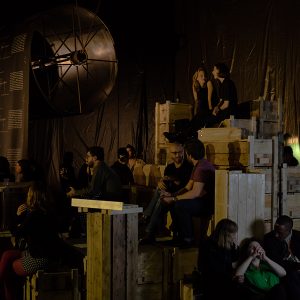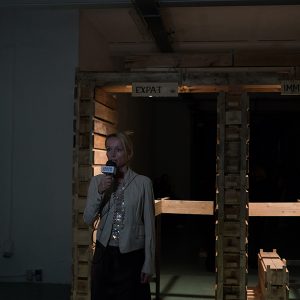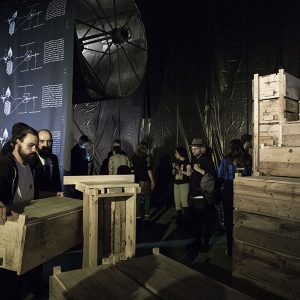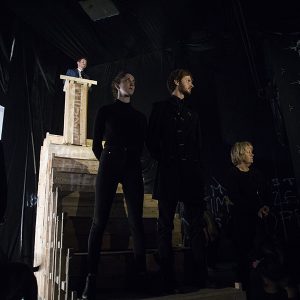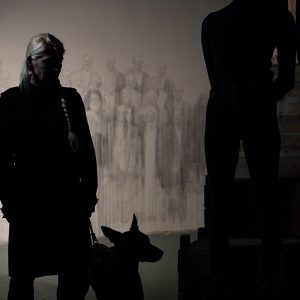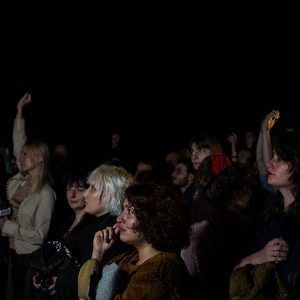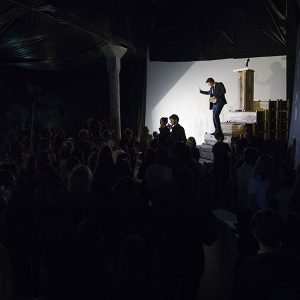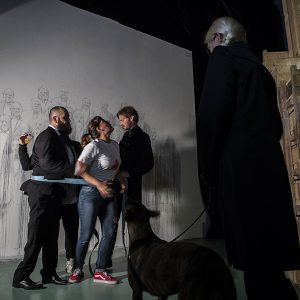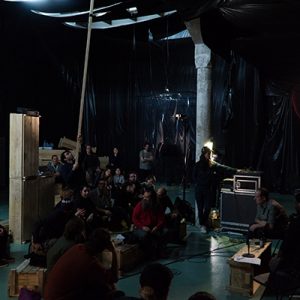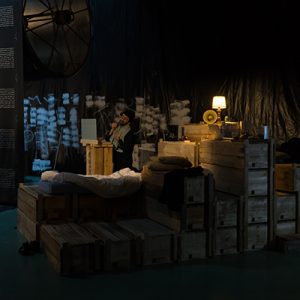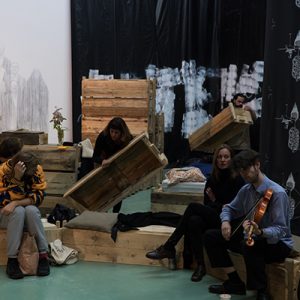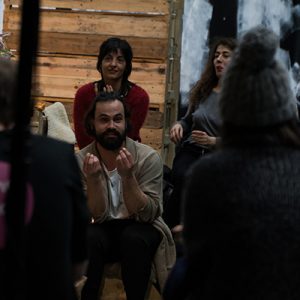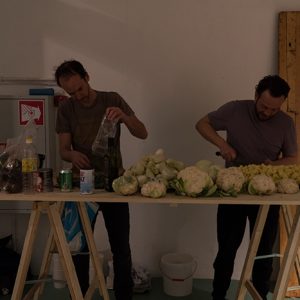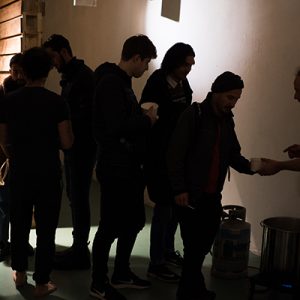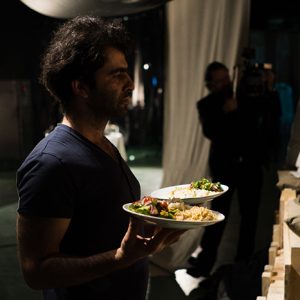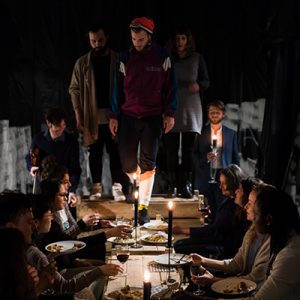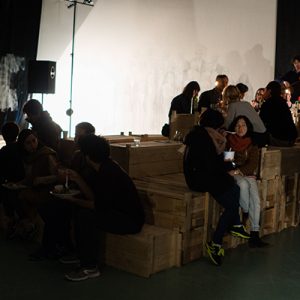Round Heads & Pointed Heads performance is based on Bertolt Brecht’s Die Rundköpfe und die Spitzköpfe (1934) at Ideology Meets Implementation exhibition at W139
This text is a transcript of the video documentation below.
I, Ehsan Fardjadniya, director, scriptwriter and producer of Round Heads and Pointed Heads, have written this text as a short reflection on the performance. On its third episode, I resigned from the aforementioned roles so the piece could follow its natural flow into a performance piece. I am writing this text as a postscript two months after the final performance as a reflection on the process.
Bertolt Brecht’s original version of Round Heads and Pointed Heads is an anti-Nazi allegory. It is a play that takes place in a fictional country in which sovereignty and power are maintained by pitting round-headed people against ones with pointed heads, placing race relations against class relations and economic inequalities. I adapted this work within the current conditions of increasing identity politics within Western Europe and beyond that serve to bolster deeper segregation, racism, neo-fascism and normalized necropolitics. I modified the play from a theatre script to an exhibition-based performance piece, which was realised through situations of direct public engagement. It unfolds through a conflict between a neo-conservative politician and a revolutionary opposition figure over a businessman’s offer to sell ammunition boxes to whomever pays more.
My version of Round Heads and Pointed Heads included environmental actions in the performance space, with the performance unfolding at different times and locations in a variety of durations. For example, on the opening night the public was separated into groups over the course of five hours, even though the performance was originally announced as only one hour long. Another example was the two unannounced performances; the one of the media group and the other of characters NANNA and friend that both started a few house earlier than the main performance. This left the public wondering if the media team as well as NANNA and friend were performers or not. This was especially true in case of NANNA and friend because they would ask the public directly for a free drink, a place to sleep and a temporary job, which they found the next day when a member of public called them.
Round Heads and Pointed Heads utilised a non-linear narrative, which took place in four episodes, each in intervals of roughly one or two weeks. The result was that some of new public had no idea about what happened in previous episodes, while some of the performer’s intensity fluctuated over the long duration of the work.
The conditions of the ensemble became a means to reflect on the precarious conditions of its members, who were gathered from an open call. This precarity was brought into the production and served to alter the scenarios within it, forming a meditation on how it affects work, income and major life decisions. These life conditions make us, unknowingly, unwillingly or sometime due to lack of alternatives, accept necropolitics and participate in everyday fascism. Non-fascist House started during the second episode, when several performers made one step towards escaping these desperate conditions by subletting their rooms and moving into the exhibition space until the end of the exhibition. The moving in occurred simultaneously with a lecture-performance about subversive art; it triggered a reflection on how certain conditions of the exhibition needed alteration in order to make actually living in the space possible.
In the third episode, Trial, the collective’s precarious working and living conditions left no time to come together to discuss and rehearse, meaning that relations between performers and the script were not particularly intimate. Therefore we decided to play ourselves; the trial transformed into an assembly to discuss conditions of working together, roles and expectations of the director, hierarchies and hidden forms of fascism in the production process and its relation to the public and ourselves.
The last episode was a new situation to separate the public. Unlike the first episode, it was not based on their self-identification with immigrant or expat, but rather on the quality and price of their shoes as a reference to their potential social class. The ones with more expensive shoes received a coin and consequently had an exclusive dinner cooked by refugees, which they had to eat while sitting with neo-conservative politician IBERIN at his long table. The rest of the public received Poor-man’s Soup, cooked by two Dutch men with dumpster-dive ingredients.
Performers
Noah Voelker, Fernanda Romann, Angelo Custódio, Eva Pyrnokoki, Pedro Matias, Arthur Guilleminot, Elisabeth Raymond, Anthony Nestel, Thais Di Marco, Fleur Mollo, Floris Schafer, Veniamin Kazachenko, Irini Pigaditi, Gerolamo Lucente, Toby Paul, James Hewitt, Leonie Kuipers, Olivia Malena Vidal and Maria Montesi.
Adapted and directed by
Ehsan Fardjadniya
Link to W139Ideology meets Implementation exhibition curated and organized by Pendar Nabipour.
Documentation
First Episode: Crisis in the Land of JAHA, Rise of IBERIN and Allegation of the Lord of Boxes. 13 Oct. 23:15.
Photographs by Chun-Hang Chiang and Maryam Ashrāfi.
Episode Two: Contemporary Subversive Insurgency hosted by Quinsy Gario with the participation of Angela Bartholomew and Menoo Grootveld. 4 Nov. 19:30.
Episode Three: Public Trial. 11 Nov. 19:30.
Episode Four: Deportations. 18 Nov. 2017.
Video: camera and edited by Floris Schäfer
